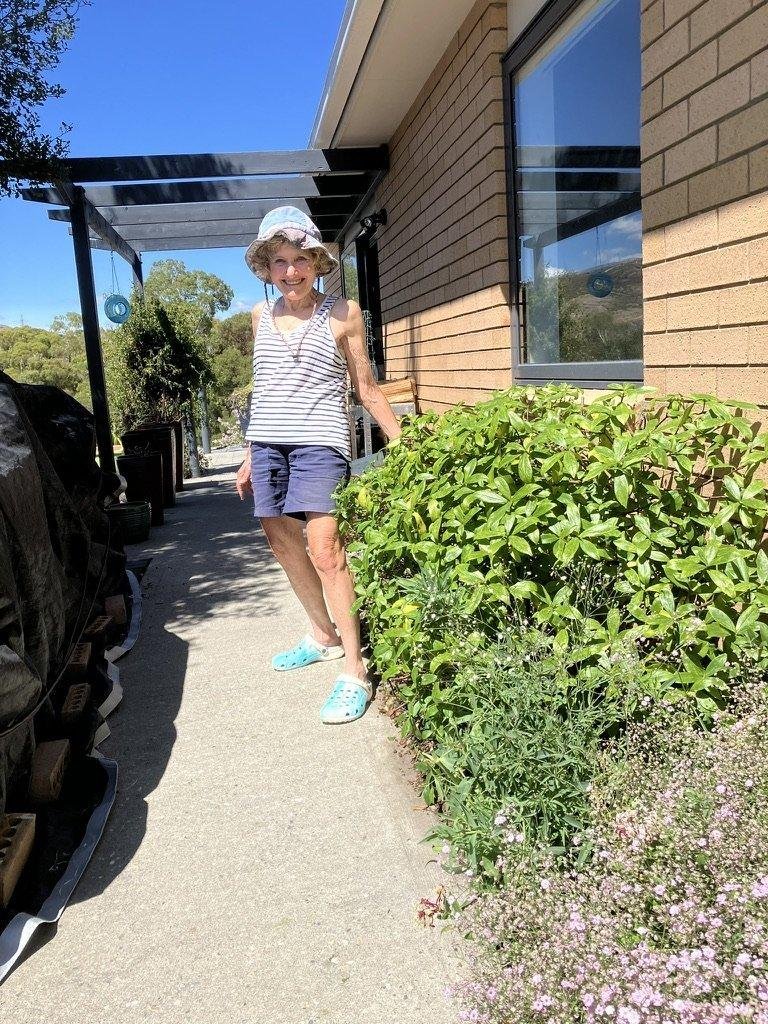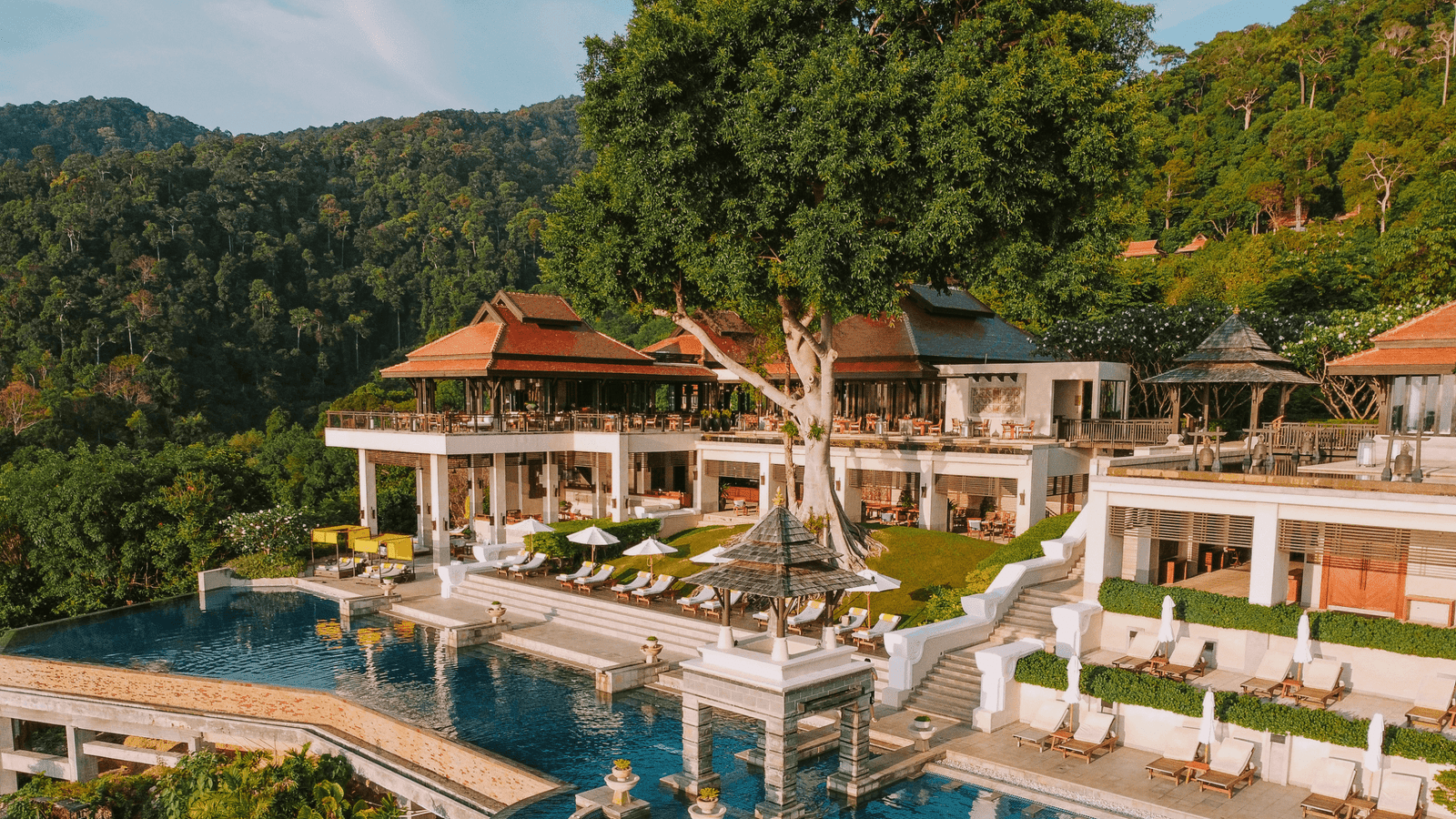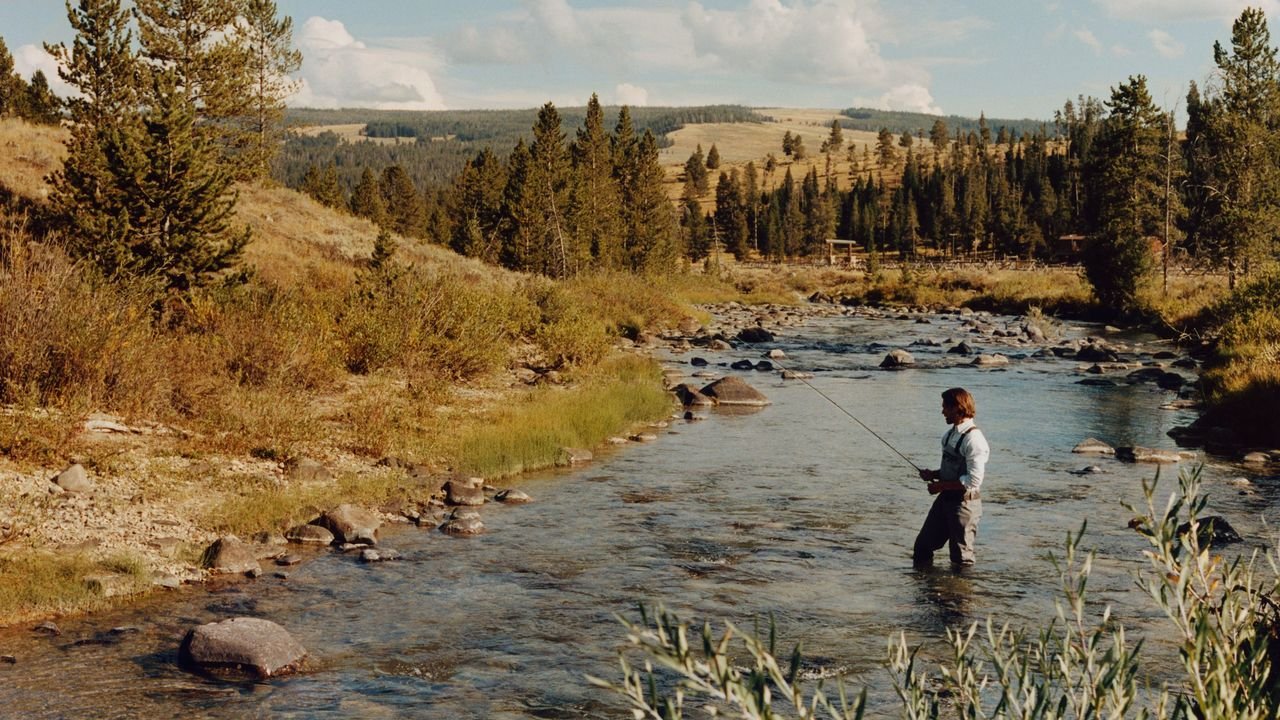Solo Travellers
Flying solo around the world

I travelled solo at age 29, and again at age 65. At age 29, I explored Europe for 10 months until my money ran out.
I’d been terrified of so many unknowns back in 1974, but the experience confirmed my love of travel and my commitment to seeing the whole world. Life’s realities intervened with 40 responsible years as a clinical psychologist, 21 dedicated years as a parent and 10 years as a wife.
Knowing finances and time were the keys to my travel freedom, day one of retirement became my departure date. Seven extraordinary, self-indulgent years as a retired nomad ensued, culminating in a miracle.
On my way
With my departure date in mind, I organised my financial planning accordingly. Being single-minded was an asset, and everything I did to support my goal was a pleasure. This included changing jobs and moving so I could afford to buy a house. Needing to be fit for travel motivated me to be active.
Planning was such pleasure, much aided by the internet. I vividly recall entertaining myself with months of luggage research. As departure date drew closer, I sold my house. My fantasy was that I’d travel forever, or at least as long as I wanted.
I did it!
Five days after my earliest possible retirement date, I was on a plane to Istanbul, initiating my wise choice of always travelling with one-way tickets.
Back at age 29, there was one significant downside to solo travel: the sexual harassment.
At age 65: this was not an issue! Being grandma-age, instead of sexual responses I evoked protectiveness and respect. I could only conclude that everywhere, people love their grandmas.
I stayed in hostels for their many advantages. Besides economy and a place to cook, you meet other travellers. Initially I stayed in dorms, but later I opted to book private rooms in hostels when available.
I organised my planning by continent: the Middle East first to satisfy my burning curiosity; Africa second, because I’d need to be fit; and third, Southeast Asia to make my personal amends for the Vietnam War.
Let me allay concerns: nothing bad happened to me. Anywhere. Ever.
I cut my retirement-travel teeth in the Middle East, the place I wanted to see the most but also the region that gave me the most trepidation about travelling as a single woman. Lessons learned from my earlier travels stood me in good stead (if it’s a choice between my own sense of comfort and being rude, choose rude).
I used public transport for several reasons, primarily because it’s inexpensive. Having no time deadlines, I was happy to exchange time for money. Also, I could count on it to get me where I was going, given my terrible sense of direction.
Eventually I arrived in a country in Asia where roads ran out, and the main artery was a river. For me with my city roots, river-as-artery was science fiction. Except, it wasn’t.
I had landed in Bangkok, the easiest and cheapest place to enter the region. Knowing I’d be back, after checking out the area for a few days, I pointed myself toward my real destination: Laos.
By this time, in my third year of retirement travel, many lessons had been learned. I must have absorbed into my muscle memory the reality that as long as I used my common sense and good judgement, things always worked out. My level of chill was astounding, especially to myself, given the many unknowns.
Exiting Thailand overland via Chiang Rai, I boarded a minibus to the Laos border where the road soon ran out! Ahead of me there was only the Mekong River, and travelling overland became travelling overwater.
Not knowing what lay ahead, I hadn’t brought food for my upcoming two-day journey. I was therefore relieved to discover a small food shop just across the border. Yes, things worked out.
I recall blindly following a miscellaneous group of travellers to the river, where we walked down a steep ramp to the dock. We all managed to fit in the waiting flat-bottomed boat. These two days on the Mekong would deliver me to my initial Laotian destination, Luang Prabang.
This city is known for being one of the most beautiful in Southeast Asia, and its famous Night Market beckoned.
I spent my two days on the Mekong focused on attitude adjustment, restraining my impatience and absorbing myself in the scenery. I enviously watched speedboats whizzing by and briefly wished I had paid for this faster transport. However, when I was told that they were noisy and that their drivers had a reputation for accidents, slow became perfect.
Our stopover was in Pak Beng, a village with one unpaved main street, quite different from the other, busier towns I’d seen so far in Thailand.
It was so interesting to see people going about their daily lives and I vowed to visit more communities away from the tourist routes. I wanted to know what it was like to live somewhere like Pak Beng, so different from my home.
Luang Prabang more than lived up to its reputation as beautiful, and the Night Market was extraordinary. So many things to see and do, so much good food!
I got around the city on my favourite form of in-town transport: a bicycle. I always hired a bike if it were both possible and safe. Thus, it was on my hired bike that I finally set out on my primary mission: to make personal amends for the Vietnam War. For my first stop I visited the UXO Laos Information Centre.
At this small museum of UXO (unexploded ordnance, or bombs), my guide was American.
With our shared language, I could read his grief.
He described the damage, both past and present, inflicted by bombs dropped during the Vietnam War (known in Laos as the Secret War).
Bombs remain, still causing harm especially to children. I donated money to the sponsoring organisation that is clearing away the bombs, treating the people still being injured, and providing education to ensure that the children know to stay away.
I needed an antidote to my gloom. So the next morning I arose to see an ongoing 5.30am ritual: women lining the streets, offering bowls of sticky rice and other foods to a parade of monks.
Perusal of my guidebook led me on to another river, the Nam Ou. This time it was for a 10-hour boat journey to the idyllic northern Laos town of Nong Khiaw. The scenery was stunning — I’d never seen anything like the peaked mountains jutting vertically out of the water. The town spanned both sides of the river. Tourism was concentrated on one side, and this became my base. There were tours on offer, and viewpoints to climb, and kayaking, and fabulous restaurants and … the options were endless. For the first time, I also met lots of other senior travellers, mostly couples, and it was a blast swapping stories and recommendations. We’d all go off on our daily explorations, then meet at our favourite Indian restaurant for dinner and share stories from our day. Such camaraderie was a welcome novelty.
Laos would not have been on my radar had it not been for the Secret War. Hence I was floored when it turned out to be so special. Not only was the scenery fabulous and varied, but it was also packed with surprises, including elephants! As an American traveller, I found it inexpensive and safe; and the people I met were friendly and helpful.
I thought to myself, “how did I get so lucky?”
The final destination and the final miracle
There were three and a-half years between Laos and my final travel miracle. These years included foreign and domestic travel, as well as surgeries with successful outcomes. Throughout my retirement I also took on occasional psychology contracts that placed me in novel locations (for example, South Dakota) and helped replenish my coffers.
Concluding a trip to explore my Jewish roots, I found myself in Riga, Latvia, in June 2017. Realising I was alive only because my Russian Jewish grandparents had emigrated to the United States back in 1910 contributed to the emotional impact of the trip.
Knowing I’d want to take advantage of my location, I’d researched must-see Eastern European destinations and discovered Tallinn, Estonia. I was all in, and a reservation for the four-and-a-half-hour bus trip from Riga to Tallinn assigned me seat six.
I was the last to board the bus. Someone was already in seat five. “Hello,” I said, hoping he was a native English speaker, which would make for a more relaxing journey.
It took only his “hello” to inform me that English was his mother tongue, but I incorrectly guessed his nationality as Australian. He was from New Zealand/Aotearoa.
Given how much I love meeting strangers, I proceeded to have one of my six-minute relationships, so named because that’s about how long you talk to someone on a skilift. Knowing you’ll never see them again, you can say whatever outrageous or true thing you want.
I learned a lot about this Kiwi: he was 72 (same as me), had flown his own plane for 40 years, took trips to Europe annually and had been a solo traveller since being widowed three years earlier. Like me, he was a cyclist. Unlike me, he preferred having a partner.
And this is how my being a nomadic solo traveller ended, on this bus to Tallinn.
Doug and I hooked up (as the youngsters say) in Tallinn, and the rest …
That this chance meeting evolved into a permanent relationship is the miracle. Why? Because I had been very happily single for 22 years. I had divorced at 40, and my last significant relationship ended at 50.
I truly believed that all relationships eventually became burdens.
So how did this one gain traction and stick?
Seven years later, now happily living in New Zealand, I can only say the miracle continues.
Preparation for retirement freedom
1. Plan your finances
Knowing I’d need as much money as possible, the moment my daughter left home I sought the highest paying job I could find anywhere. I had a location list of must-haves (reasonable housing costs was number one) and negotiables (for example, a pretty city). I saved every possible penny while still having fun during my 10 years spent in Spokane, Washington.
2. Keep your body as fit as possible
Getting to the gym and staying active was made easier knowing that this was my insurance policy for retirement. I was investing in feeding my passion to see and move around in the whole world.
3. Make the digital world your friend
In 2010 at age 65 I was very intimidated by technology. My digitally savvy daughter set up my “Retired Nomad” blog. The many youngsters I met in dorms were happy to tutor me on Facebook and other platforms. I now thankfully have a record of my travels.
4. Practise being alone
I started at 22, believing I wouldn’t marry, yet knowing there were a lot of things I wanted to do. My first practice solo-travel session was alone in a restaurant booth in West Hartford, Conneticut, ordering a hot fudge sundae.
The book
Women Travel Solo by Lonely Planet, $39.99 RRP.
Solo Travellers
6 Affordable Hotels in Thailand to Fulfill Your “White Lotus” Dreams on a Budget

The first luxury hotels in Thailand opened over a century ago, but the nicest affordable hotels in Thailand promise an equally memorable visit without the hefty price tag. Alongside sprawling Four Seasons, Mandarin Orientals, and Ritz Carltons are beautiful, credit card–pleasing boutique hotels and independent resorts that, if you book the right room at the right time of year, will let you revel in luxurious facilities without spending a fortune. Whether you’re traveling around the country, in need of somewhere to stay to complement your two-week itinerary, or sticking to one of the best islands in Thailand, finding the right hotel can really enhance the experience. From where to stay on infamous islands like Phuket and Koh Samui (home to the uber-luxe White Lotus properties) to lesser-known hotspots like Koh Yao Noi, here are a handful of the best affordable hotels in Thailand.
How we choose the best affordable hotels in Thailand
Every hotel review on this list has been written by a Condé Nast Traveler journalist who knows the destination. When choosing hotels, our editors consider properties across price points that offer an authentic and insider experience of a destination, keeping design, location, service, and sustainability credentials top of mind.
Solo Travellers
Travelling to Japan this summer? Beat the heat with these cooling dishes

Once caught, the noodles are dipped in tsuyu (a chilled, umami-rich sauce made from soy, mirin and dashi) then slurped down between bites of tempura or cool slices of cucumber. “It’s the perfect dish for summer when the heat dulls your appetite,” says Ishi Take, director at Chihonoie. “Nagashi somen is light, refreshing and easy to eat – even when [it’s so hot outside that] nothing else sounds appealing.”
He adds, “We get all kinds of visitors here – parents with kids, couples, even travellers from overseas. Everyone gathers around the bamboo flumes, laughing and trying to catch the noodles. It’s not just a meal; it’s a shared summer memory.”
Solo Travellers
Big Sky Remains Good for Ski and Snow, But Summer Has Entered the Chat

Last year the rustic-chic Lone Mountain Ranch unveiled Auric Room 1915, a members-only supper club and venue where overnight guests can retreat into cowhide-swathed booths to enjoy fried chicken and pours of 18-year-old Elijah Craig bourbon. True to its cattle-ranch roots, the hotel still devotes Thursday nights all summer long to the rodeo, a rowdy, locally beloved spectacle of cowboy and cowgirl culture complete with Montana beef brisket sandwiches and plenty of beer.
Finally, in the Spanish Peaks, Montage Big Sky, which opened in 2021, expanded its lodging options last year with 47 new residences—including 15 freestanding Mountain Homes, each with five or six bedrooms—adding to the resort’s 100 original rooms and suites. Guests can take advantage of all the hotel’s perks, such as access to Crazy Mountain Ranch, an 18,000-acre working cattle ranch with ample terrain for horseback riding; an 18-hole golf course; and summertime outdoor excursions like heli-fly-fishing tours that take guests to remote stretches of the Yellowstone and Missouri Rivers.
This article appeared in the July/August 2025 issue of Condé Nast Traveler. Subscribe to the magazine here.
-

 Mergers & Acquisitions1 week ago
Mergers & Acquisitions1 week agoAmazon weighs further investment in Anthropic to deepen AI alliance
-

 Mergers & Acquisitions1 week ago
Mergers & Acquisitions1 week agoHow Elon Musk’s rogue Grok chatbot became a cautionary AI tale
-

 Asia Travel Pulse2 weeks ago
Asia Travel Pulse2 weeks agoLooking For Adventure In Asia? Here Are 7 Epic Destinations You Need To Experience At Least Once – Zee News
-

 Brand Stories2 weeks ago
Brand Stories2 weeks agoVoice AI Startup ElevenLabs Plans to Add Hubs Around the World
-

 Mergers & Acquisitions1 week ago
Mergers & Acquisitions1 week agoUK crime agency arrests 4 people over cyber attacks on retailers
-

 AI in Travel2 weeks ago
AI in Travel2 weeks ago‘Will AI take my job?’ A trip to a Beijing fortune-telling bar to see what lies ahead | China
-

 Mergers & Acquisitions1 week ago
Mergers & Acquisitions1 week agoEU pushes ahead with AI code of practice
-

 Mergers & Acquisitions2 weeks ago
Mergers & Acquisitions2 weeks agoChatGPT — the last of the great romantics
-

 The Travel Revolution of Our Era1 month ago
The Travel Revolution of Our Era1 month agoCheQin.ai Redefines Hotel Booking with Zero-Commission Model
-

 Mergers & Acquisitions1 week ago
Mergers & Acquisitions1 week agoHumans must remain at the heart of the AI story
